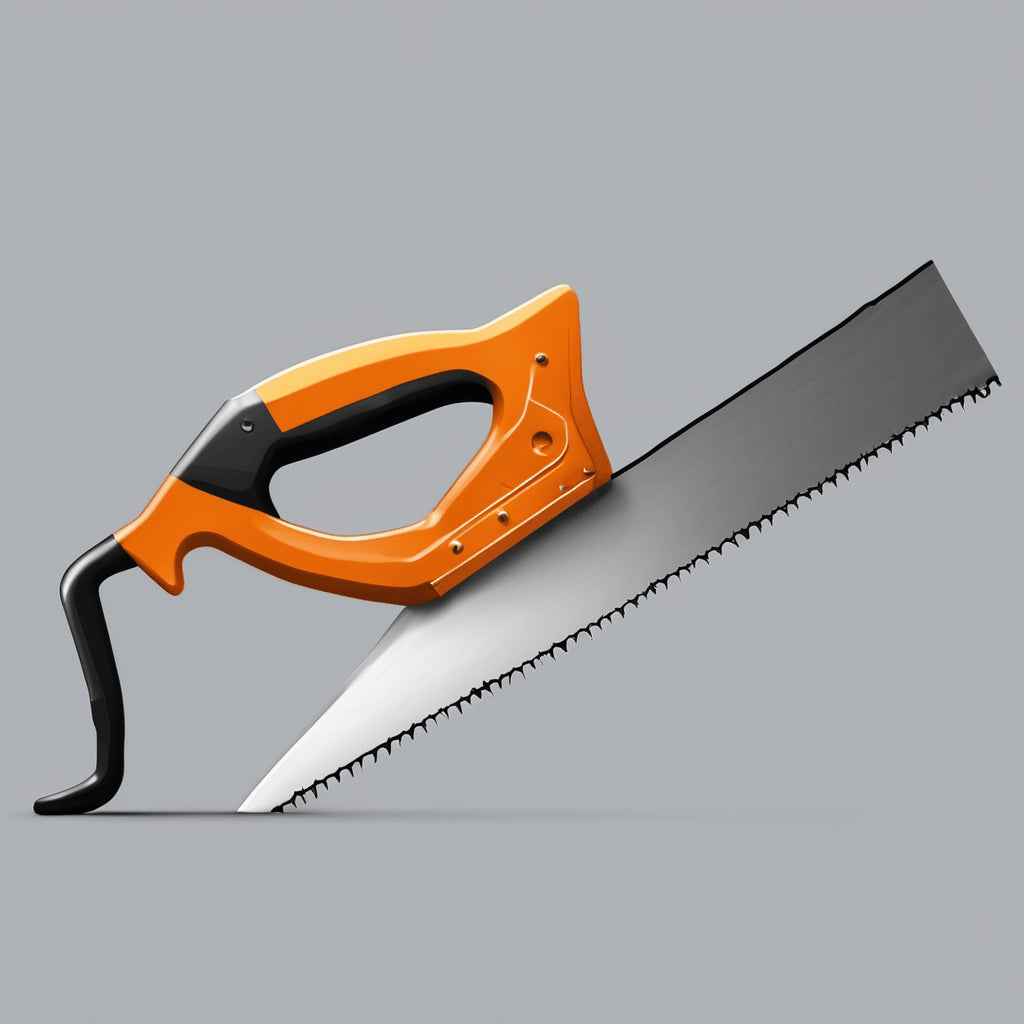Your Cart is Empty
Free shipping over 12.99 丨 30-Day Money-Back Guarantee 丨shipping: 2-3Days
Free shipping over 12.99 丨 30-Day Money-Back Guarantee 丨shipping: 2-3Days

Author: Leb
Personal blog: https://lebshare.blogspot.com
Handheld saws are specialized tools that help with a variety of projects and DIY tasks. This guide will help you find the right type of hand saw for wood and metal. Also, find maintenance tips on how to store your hand saw for long-term use.

Each handheld saw has its uses and benefits. Some tools, including back saws, pull saws, keyhole saws, drywall saws, and hacksaws, are necessary for specific applications where a standard handsaw may not work properly. Below is an overview of the various types of hand saws.
Used for cutting wood with wood grain
Typically 24 to 26 inches long with 4 to 7 teeth per inch (TPI)
Cuts very sharply and leaves a slightly rough edge
Used to cut wood along the grain
Typically 24 to 26 inches long with a TPI of 8 to 11
Does not cut as aggressively as a saw and leaves a smoother edge
Used to cut wood along the grain
Usually shorter than a regular crosscut saw, making it easier to carry around
Used for fine cutting of wood, especially to deal with molded joints
Has a deep steel tension frame and a very thin blade that allows complex cuts to be made at extreme angles.
For fine cutting of wood for shaping and trimming
The back has a rigid component that prevents the saw from kinking during use
For fine cutting of wood for shaping and finishing.
Cutting pull stroke to provide better control and eliminate the possibility of the saw kinking in the kerf.
For cutting wood joints
The back is as hard as a back saw, but usually smaller with finer teeth.
For cutting circles and curves in wood
Has a very thin pointed blade for cutting small curves and holes with small radii
For round and curved cuts in wood
Longer, thicker blades than keyhole saws for slightly heavier work, such as cutting holes for pipes or wires in subfloors
Used for cutting wallboard, plaster, and backer board
Similar to a compass, but with thicker teeth for quicker wallboard cuts
A metal handsaw
Has very fine teeth and a thin blade that takes tension in a steel frame
Cut cobalt with a jamb saw.
Used to leave a gap in the floor below door frames and other obstructions
The rear handle offset to allow the blade to cut close to the floor
Used for cutting mold and plastic tubing
The front of the blade is rounded to start plunge-cutting
Blade Length: The blade length determines the cutting capacity of the hand saw. Longer blades are suitable for making longer cuts, while shorter blades offer more control and precision. Consider the types of projects you will be working on and choose a blade length accordingly.
Teeth Per Inch (TPI): The TPI refers to the number of teeth on the saw blade per inch. Higher TPI blades provide smoother cuts on delicate materials, while lower TPI blades are better suited for rough cuts on thicker materials. Consider the materials you will be cutting and choose the appropriate TPI for optimal performance.
Tooth Configuration: Hand saws come with different tooth configurations, such as crosscut, rip, or hybrid. Crosscut teeth have angled edges for cutting across the grain, while rip teeth have straight edges for cutting along the grain. Hybrid teeth offer a combination of both, providing versatility for various cutting tasks.
Handle Design: The handle design plays a crucial role in comfort and control. Look for a hand saw with an ergonomic handle that fits comfortably in your hand and provides a secure grip. Some handles are designed with rubberized or textured grips for enhanced control and reduced hand fatigue.
Quality and Durability: Consider the quality and durability of the hand saw. Look for saws made from high-quality materials, such as hardened steel blades, to ensure longevity and optimal performance. Additionally, check for features like rust-resistant coatings or replaceable blades for added convenience.
Store the handsaw in a safe, dry place or toolbox to avoid rust.
Do not store it near other metal tools that may dull the saw blade.
Most blades come with a blade guard. Be sure to cover the blade before storing it.
Lubricate the blade to prevent rusting with hardware lubricant, which can be easily applied with a rag.
Rust spots can be wiped away with medium steel wool or 320-400 grit sandpaper. Be sure to wipe off rust with a soft cloth and lubricate the blade to prevent rust.
Always wear appropriate safety gear, including safety glasses and gloves, when using a hand saw.
Ensure the workpiece is securely clamped or held in place to prevent slipping or movement during cutting.
Use smooth, controlled strokes when cutting, and avoid applying excessive force, as it may lead to blade binding or kickback.
Keep your fingers away from the path of the saw blade and use a sawing guide or miter box for straight and accurate cuts.
Regularly inspect the hand saw for any signs of damage or wear and replace worn-out blades or handles promptly.
By considering these factors and following safety guidelines, you can choose the perfect hand saw that meets your cutting needs while ensuring a safe and enjoyable woodworking experience.
Article Tags: Hand Saw, Woodworking Tools, DIY Projects, Crosscut Saw, Rip Saw, Back Saw, Coping Saw, Hacksaw, Blade Length, Teeth Per Inch, Tooth Configuration, Handle Design, Safety Tips
1.10 must-read books for electricians in 2021! Recommended by Master Electricians
2.Best Books For Electricians|Must-read books for those who want to become electricians
3.5 Best Home Electrical Wiring Books for Beginners | Electricians Guide
4.Top And Best Books And Guides For Electricians And Apprentices | Knoweasy Electrician Guide
5.The Best Electrician Books For Beginners: Top Six Sellers In 2022
Comments will be approved before showing up.